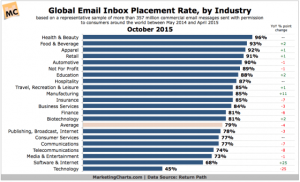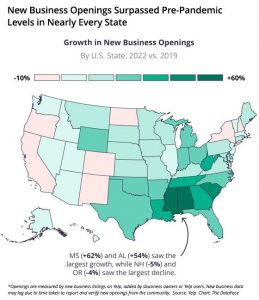Trends to Expect for Collaboration and Team/ Project Management in 2022

As 2022 slowly unravels, we’ve begun to ponder the lessons learned from working from home. A more isolated work rhythm resulting from the Home Office has undoubtedly thrown team workplace collaboration off-kilter due to a more significant lack of face-to-face communication with other members.
Furthermore, with team members dispersed across different geographical locations, management of both the team and the remote team and any ongoing project work have to collaborate and adapt quickly.

However, for many, the start of 2022 marks the beginning of a second-year working from home. As a result, businesses and their individual project teams have had ample time to adjust to this new working rhythm. We can use this newfound knowledge to carefully forecast how the rest of 2022 will unfold in terms of collaboration and team/project management.
Team Collaboration Predictions for 2022
For the past two years, the Home Office has been an integral part of our daily work life. As a result, based on our key learnings from remote work during this time, it’s safe to say that 2022 will lay the groundwork for organizations to build their businesses on two pillars of team collaboration, not just one.
Integrate Your Remote Teams for Workplace Collaboration
Organizations can now fully integrate remote teams and offer them tailored collaborative software developed during the pandemic to ensure that they can stay connected no matter where they are in the world.
Incorporate VR
The incorporation of VR, for example, is a crucial concept behind the successful collaboration. Although it’s unlikely we’ll see VR integrations fully fleshed out in all Home Offices by the end of 2022.
However, with two years of remote working experience under our belt, you can bet that such technology will be tested this year to improve remote team collaboration.
Your Cybersecurity Concerns
Next, as we expand beyond the physical work environment, cybersecurity concerns will always be at the forefront of any further development and enhancement of remote work.
While some safeguards are already in place — such as strong passwords and a greater emphasis on using a VPN, as our remote working practices evolve, so will our cybersecurity needs.
Security Features
Security features such as multi-factor authentication and the Zero Trust approach will undoubtedly be prioritized in 2022.
Creating a secure remote access infrastructure, on the other hand, will be critical to protecting remote workers better. A successful remote access infrastructure and company software and data can be centralized on a terminal server designed specifically for remote connections.
Single-Sign-On (SSO) SolutionS
In any case, by 2022’s end, there will be greater use of single-sign-on (SSO) solutions to connect all company IT systems. This is due to the ability of businesses to configure access rights for multiple systems from a single point of control.
It also provides a centralized location for monitoring employee login activity while reducing the attack surface available to hackers looking for a way into secure systems.
Remote Workplace Collaboration
Finally, due to the emphasis on remote collaboration, the traditional office, including its architecture and symbology, will evolve as 2022 progresses.
Instead of being viewed as a hub where people clock in and out during a 9-5 working day, the office will be transformed into a social space where face-to-face interactions can occur.
In essence, this will take the sting out of the seriousness of working life and instead introduce a more significant social component such as a means of bringing people together.
Team Management Predictions
Another concern that is often overlooked for teams working remotely is that of mental health. The turn of 2020 saw an influx (or frantic scrabble) of organizations seeking out innovative ways to keep business and revenue flowing while simultaneously battling the constraints of a rapidly expanding global pandemic.
Yet, even as new ways to approach work were founded and widely accepted, it became apparent that the sudden shift put the way we work off-kilter. Such as while we focused on keeping business afloat, we neglected to seek out ways to protect those that made all of this possible.
The Toll of Working Remotely
Yes, working remotely has offered remote workers some valuable and unique benefits, but being made to work through a pandemic, lockdowns, social restrictions, and increased solitude take their toll on those at the center of it all.
Thus, 2022 will undoubtedly see an increased emphasis on avoiding mental stresses when working (not just remotely). In addition, there will be innovative approaches to reach out to those working in-house — and to those working remotely.
Organizations will take up new approaches to the combined worker situations to ensure the health and well-being of those that enabled such a dramatic business model shift.
Understand the Benefit of Soft Skill Leaders
This idea is also carried over to the following prediction: a greater emphasis and understanding of soft skills in leaders. Soft skills, such as communication, discipline, adaptability, and the ability to take on the initiative, have already been emphasized as a means to propel remote work in 2020 and 2021.
Likely, 2022 will emphasize the importance of soft skills as a means to connect people with people — rather than people solely with work.
See Your Team Holistically
In 2022, leaders will need to start thinking about their teams more holistically. As a result, in an environment where employees may not be able to meet or interact with their team or leaders in person. Businesses will see soft skills such as transparency, trust, inclusivity, and collaboration as critical in establishing and maintaining strong company culture.
Core Values and Culture
Employees are correct to compare their core values to those of their superiors, and culture will become the most crucial decision criterion when deciding where to take their careers.
Leaders must live and breathe their culture to ensure that it aligns with their employees’ wants and needs, and the aforementioned soft skills will be critical in ensuring this throughout 2022.
Leaders will thus be held accountable for ensuring that their team is heard, fulfilled, and has the tools and encouragement to carry out their collaborative work on a daily basis.
Project Management Predictions
The pandemic, in many ways, has been a learning experience. Project teams are by no means an exception to this, as they too have had to find creative ways to maintain remote project management practices throughout this time.
Admittedly, it’s not uncommon for project teams nowadays to have an element of their project carried out by remote team members in the last ten years. We will likely see this trend increase worldwide from 2022 forward. Project management is beginning to play an even more significant role globally.
Remote Project Management
With remote project management now a fully-fledged business model, the geographical distance between the office and your remote project members is no longer seen as an issue — but rather an opportunity, specifically for SMEs and start-ups.
With our learnings about remote work garnered from the pandemic’s longevity, those companies with fewer resources (such as money, connections, tools, etc.) have now been offered a fantastic growth opportunity by integrating remote work into their everyday working practices.
Nowadays, even smaller companies have access to international teams and can sustain a project’s development remotely at a fraction of the cost of a more conventional project. The ending result is that many smaller companies have an opportunity to internationalize faster than ever before.
No One-Size-Fits-All
According to Dr. Diana Burgan, there is no “one-size-fits-all” approach to project management methodologies.
However, as project management begins to firmly set on a hybrid model, with a careful balance of in-house team members working with remote members, companies and project teams will undoubtedly place a greater emphasis on Agile management methodologies in 2022.
Agile Management
While Agile management is most commonly associated with small software development teams, the pandemic has seen a sharp rise in the popularity of Agile methodologies, as opposed to other methods, such as the Waterfall approach. This is primarily because “slow and steady” is not a viable work strategy in the context of a global pandemic.
On the other hand, flexibility and agility enable organizations to keep up with the rapid pace of digital transformation.
According to McKinsey and Company, those who adopted Agile practices during the pandemic outperformed those who did not, allowing them to speed up work and better adapt to new industry landscapes.
With that said, it’s safe to say that 2022 will continue to monitor the rising trend of agile work methodologies, especially since companies have seen proof that increased use of Agile management has resulted in numerous successes for others during the same timeframe.
The Rise of Blockchain
And finally, with an increased discussion about the concept of a “Metaverse,” it’s not surprising that blockchain is gaining traction as a viable project management tool. The Metaverse with fully realized blockchain is set with its market and is expected to rise significantly by the end of the year.
We’ve already seen the use of AI-based frameworks to help shape and direct agile project management teams; however, the use of blockchain may provide even more significant benefits in 2022.
Blockchain is simply the process of storing digital information (i.e., the ‘block’) in a public, decentralized database (i.e., the ‘chain’). O e of its most significant advantages for project management is the ability to keep an immutable record of events using distributed ledger technology (DLT).
As a result, project teams can automate many processes, streamlining infrastructure, logistics, and data tracking on projects. This is something that many project managers strive for in the real world, but it is challenging to achieve without a feasible system in place.
As a result, the pre-programmed blockchain will undoubtedly become a viable project management tool in 2022, assisting in the validation of decision-making processes and improving project performance.
Final Thoughts for Workplace Collaboration
The last two years have undoubtedly been trying for many businesses that have used remote project teams. However, while getting through the pandemic may seem like a long slog, in terms of team collaborations and project management, we have excelled by leaps and bounds.
Our experiences over the last couple of years have taught us that remote work is a viable business model and that, when implemented correctly, it can be highly beneficial.
While this year may still throw us some curveballs, 2022 will be a watershed moment as we finally stand on a solid foundation of healthy research and experience while navigating our way through the pandemic.
Although it is unclear when the pandemic will end, it is safe to say that 2022 will be a milestone year for collaborations and team/project management in terms of advancements.
Image Credit: Canva Studio; Pexels; Thank you!
The post Trends to Expect for Collaboration and Team/ Project Management in 2022 appeared first on ReadWrite.
(66)
Report Post





